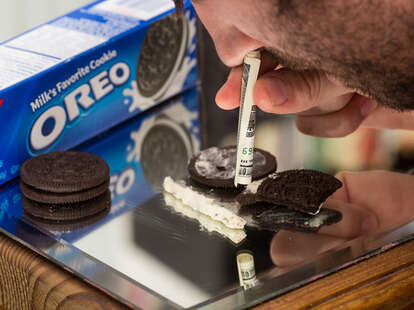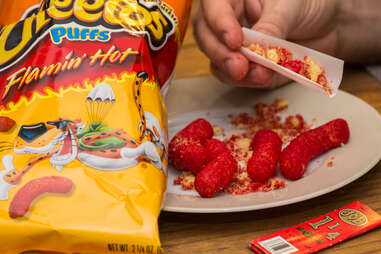Why you get addicted to Oreos, McDonald's, and other delicious, delicious junk

Except for totally horrendous prison wine, you can pretty much get addicted to almost anything. At first, the habit seems fun and safe, but then next thing you know, you're snorting white stuff off a dirty mirror and just throwing away the cookies.Here's how the flavor engineers behind some of the world's largest food companies booby-trapped their products with the magic of science in order to keep you wrapped around their sugary, cheese-dusted fingers.OreosAs our own snack food scientists reported here, Oreos activate more pleasure receptors in the brain than some drugs. When scientists tested the cookies next to cocaine, the rats actually responded the same to what's-in-the-middle as the white stuff.McDonald'sMickey D's couldn't have served billions and billions without knowing how to properly create a sense of McAddiction. Psychology Today broke it down -- childhood memories actually make food taste better according to neuroscience research, branding functions as a Pavlovian reward system, the convenience of the meal overloads dopamine2 receptors and lowers impulse control, and insane amounts of sugar serves as addiction's special sauce.

Cheetos Puffs
In what might be the greatest junk food article of all time, NY Times writer Michael Moss reports that the "mouth feel" of Cheetos is so light and airy that the flaming hot snack actually plays a trick on the brain. When the Br'er Rabbit of snacks melts in your mouth, the texture is so sublimely mind-numbing that your synapses don't send signals that calories are being consumed... and then poof! The whole bag is gone.
Coca-Cola
The trick that keeps people coming back to Coke is that "everything's better with it". It's also perhaps the world's greatest example of sensory-specific satiation. Foods that have one overpowering flavor quickly stop feelings of hunger and trigger the brain to want more varied sources of nutrients. The brain also remembers the flavor vividly and is less likely to want more of it. But when a flavor profile is too complicated to identify, it turns off these natural limiters and you just just can't beat the craving.